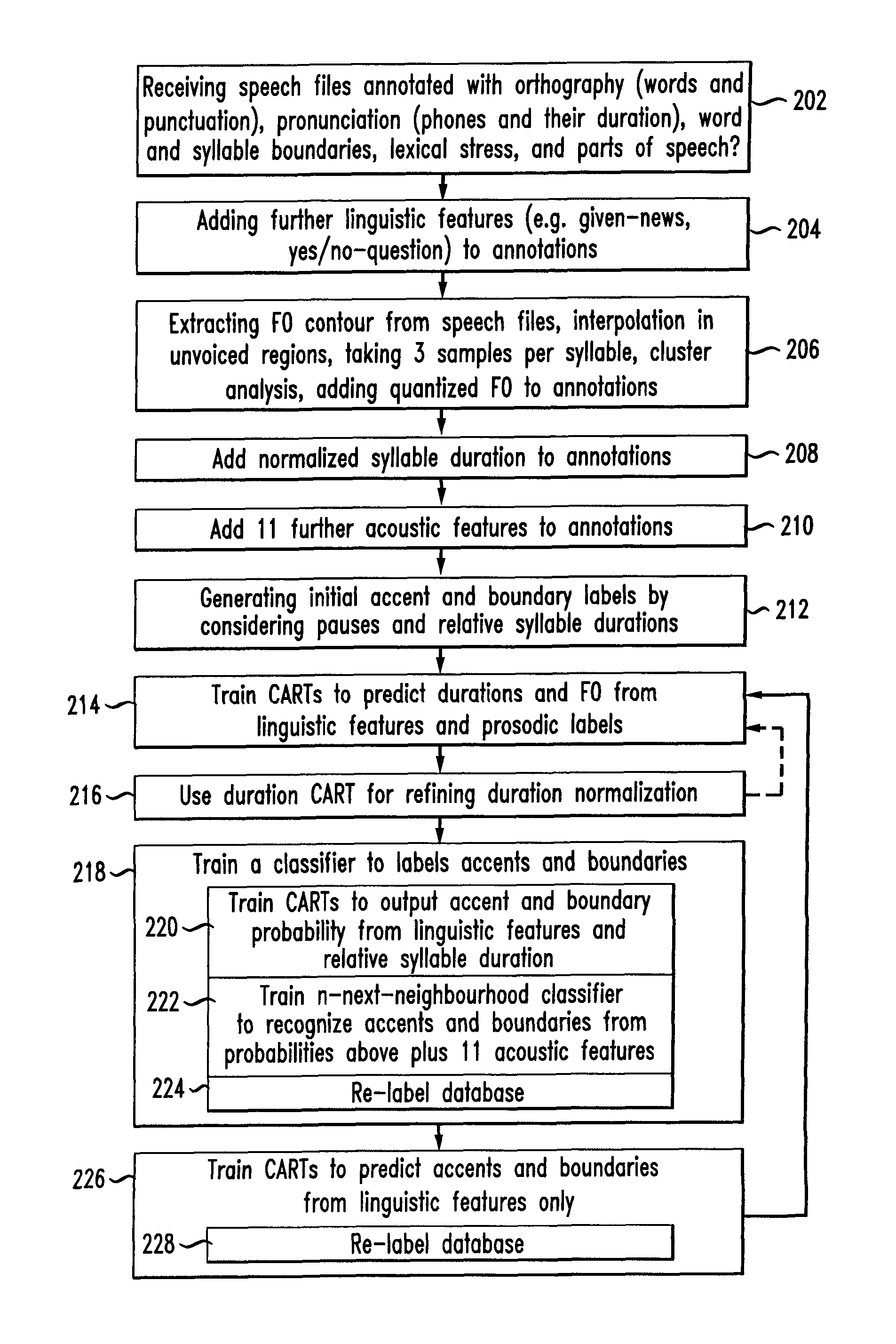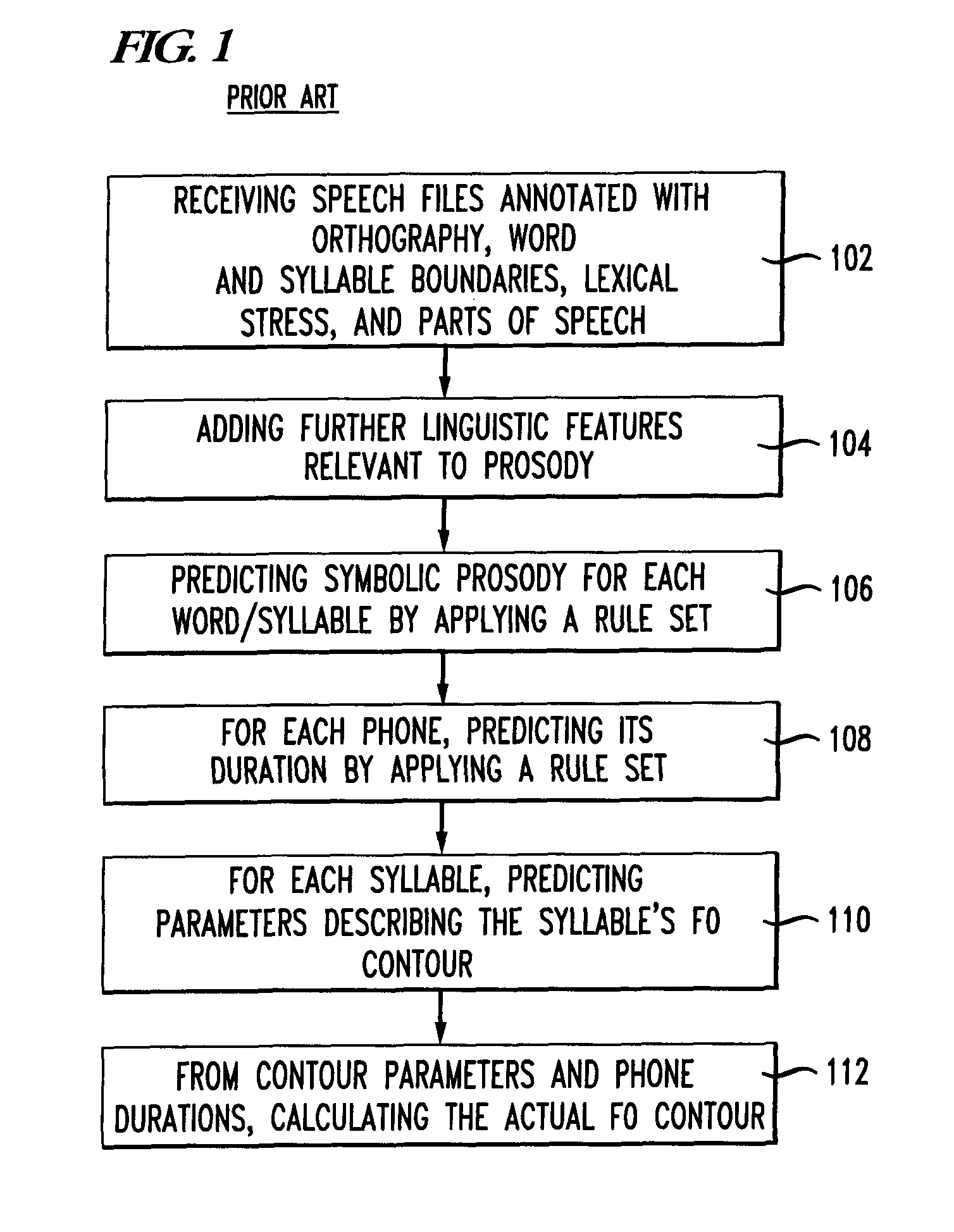System and method for predicting prosodic parameters
a prosodic parameter and system technology, applied in the field of texttospeech generation, can solve the problems of slow tobi labeling, high cost, and inability to address the cost factor
- Summary
- Abstract
- Description
- Claims
- Application Information
AI Technical Summary
Benefits of technology
Problems solved by technology
Method used
Image
Examples
Embodiment Construction
[0020]The present invention will be discussed with reference to the attached drawings. Several of the primary benefits as a result of practicing the present invention are: (1) the ability to drastically reduce the label set as compared to ToBI; (2) creating initial labels and exploiting the fact that all languages have prosodic phrase boundaries that are highly correlated with pauses, and both accented and phrase-final syllables tend to be lengthened; and (3) refining the labels by alternating between prosody prediction from text alone, and prosodic labeling of speech plus text.
[0021]A database is developed to train the prosody models. In a diphone synthesizer, there is only one or a few instances of each diphone which need to be manipulated in order to meet the specifications from the text analysis. In unit selection, a large database of phoneme units is searched for a sequence of units that meets the specifications best and, at the same time, keeps the joins as smooth as possible....
PUM
 Login to View More
Login to View More Abstract
Description
Claims
Application Information
 Login to View More
Login to View More - R&D
- Intellectual Property
- Life Sciences
- Materials
- Tech Scout
- Unparalleled Data Quality
- Higher Quality Content
- 60% Fewer Hallucinations
Browse by: Latest US Patents, China's latest patents, Technical Efficacy Thesaurus, Application Domain, Technology Topic, Popular Technical Reports.
© 2025 PatSnap. All rights reserved.Legal|Privacy policy|Modern Slavery Act Transparency Statement|Sitemap|About US| Contact US: help@patsnap.com



